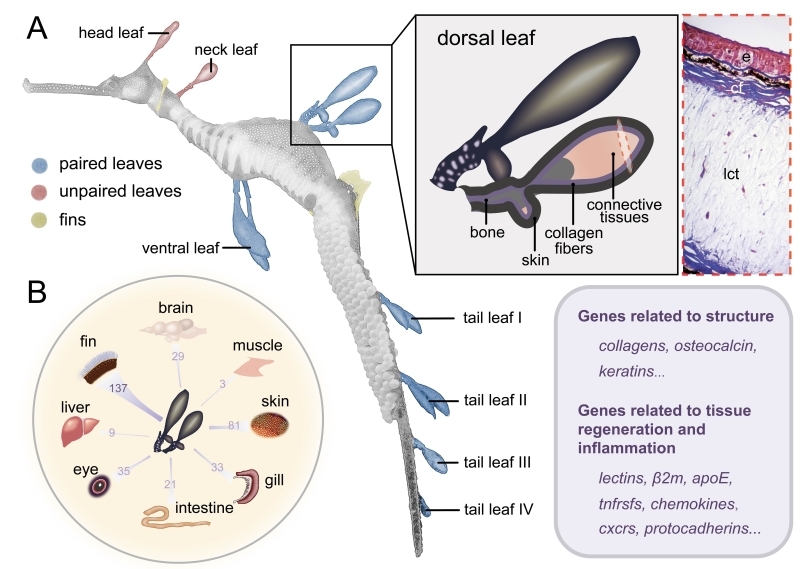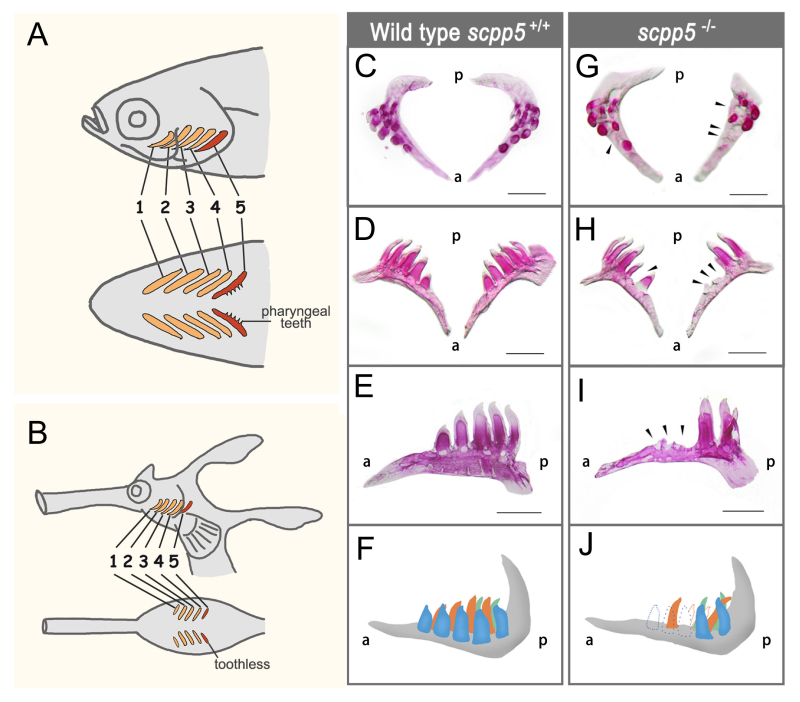A study by Prof. LIN Qiang from the South China Sea Institute of Oceanology (SCSIO) of the Chinese Academy of Sciences and his collaborators from Singapore and Germany lifts the veil on seadragons’ mysterious looks, and sheds light on a sex-determination locus shared by seadragons and alligator pipefish, both members of the Syngnathidae family.
This study was published in Science Advances on August 18.
In this study, the researchers generated high-quality, chromosome-level genome assemblies for a male and female common seadragon (Phyllopteryx taeniolatus), and a male and female alligator pipefish (Syngnathoides biaculeatus), in order to answer questions about phenotype and sex-determination mechanisms.
Seadragons, with their dragon-shaped body, leaf-like appendages and bright coloration, are typical examples of Darwin’s “endless forms most beautiful.” Like other members of the family Syngnathidae, seadragons lack pelvic fins and scales, and feature “male pregnancy,” i.e., males incubate fertilized eggs until term. In addition, they lack oral and pharyngeal teeth, a trait known as edentulism.
Previous studies by LIN’s group hypothesized that the loss of a majority of P/Q-rich secretory calcium-binding phosphoprotein (SCPP) genes might be responsible for edentulism in these fishes. In these studies, the researchers knocked out a P/Q-rich SCPP gene, scpp5, in zebrafish. This gene has been pseudogenized in all syngnathid species. Zebrafish mutants for scpp5-/- were found to exhibit a marked reduction in the number of pharyngeal teeth with the remaining teeth appearing grossly deformed, lending support to the hypothesis that the loss of scpp5 contributed at least partly to the loss of teeth in syngnathids.
According to Prof. LIN, detailed analyses of the genomes and transcriptomes of fishes involved in the current research, in combination with the scientists’ previous zebrafish research, “have uncovered several interesting findings about the genetic basis of their specialized phenotype.”
In terms of phenotype, the leaf-like appendages of seadragons are adaptive innovations that have helped them to blend perfectly with seaweeds. Although these structures resemble fins, histological analysis has shown that they lack fin rays and comprise mainly a bone matrix, along with connective tissues enriched with collagenous fibers.
Transcriptome analysis as part of the current study shows that some genes involved in fin development have been co-opted for the development/maintenance of these leafy structures. In addition, the transcriptome of the leafy structures was found to be enriched in genes related to the extracellular matrix and immune defense.
In terms of sex-determination, this mechanism had not been well understood before even though syngnathids are popular models for studying sexual selection, sex-role reversal, and reproductive biology. This study, in contrast, has revealed a putative sex-determination locus and a candidate male-sex determining gene (amhr2y) that is present in both the common seadragon and alligator pipefish but absent in other syngnathid genomes sequenced so far. This is a young sex-determination loci and the first report of a sex-determination locus and gene in a syngnathid species.
All in all, this study provides new insights into the genetic basis of the seadragon phenotype and sex-determination locus, and is expected to pave the way for future research in the adaptive evolution of animals.


Fig. 1 Morphology and genetic makeup of the leaf-like appendages in the common seadragon. (Image by SCSIO)

Fig. 2 Pharyngeal tooth phenotypes in zebrafish scpp5 homozygous mutants. (Image by SCSIO)
Publication:
Seadragon genome analysis provides insights into its phenotype and sex-determination locus. Science Advances, 18 Aug. 2021, DOI: 10.1126/sciadv.abg5196.
Contact person:
Prof. Qiang Lin
Email: linqiang@scsio.ac.cn
